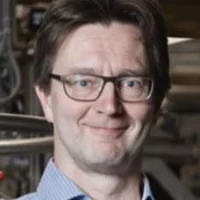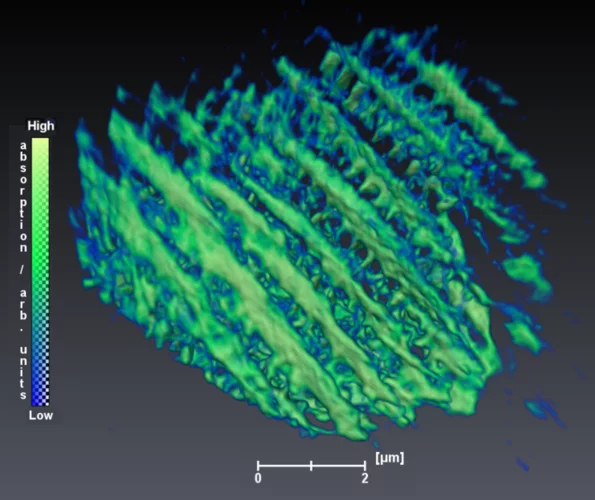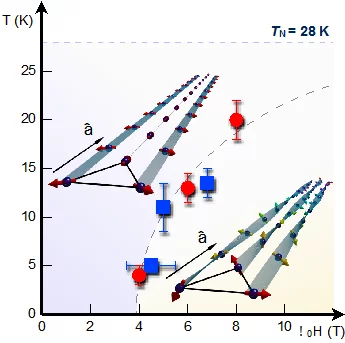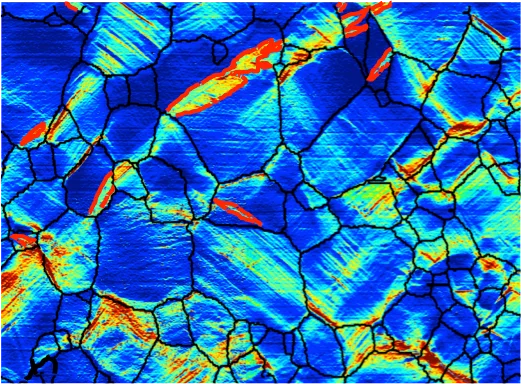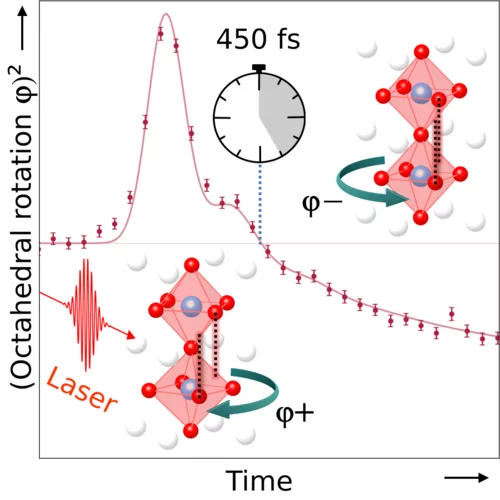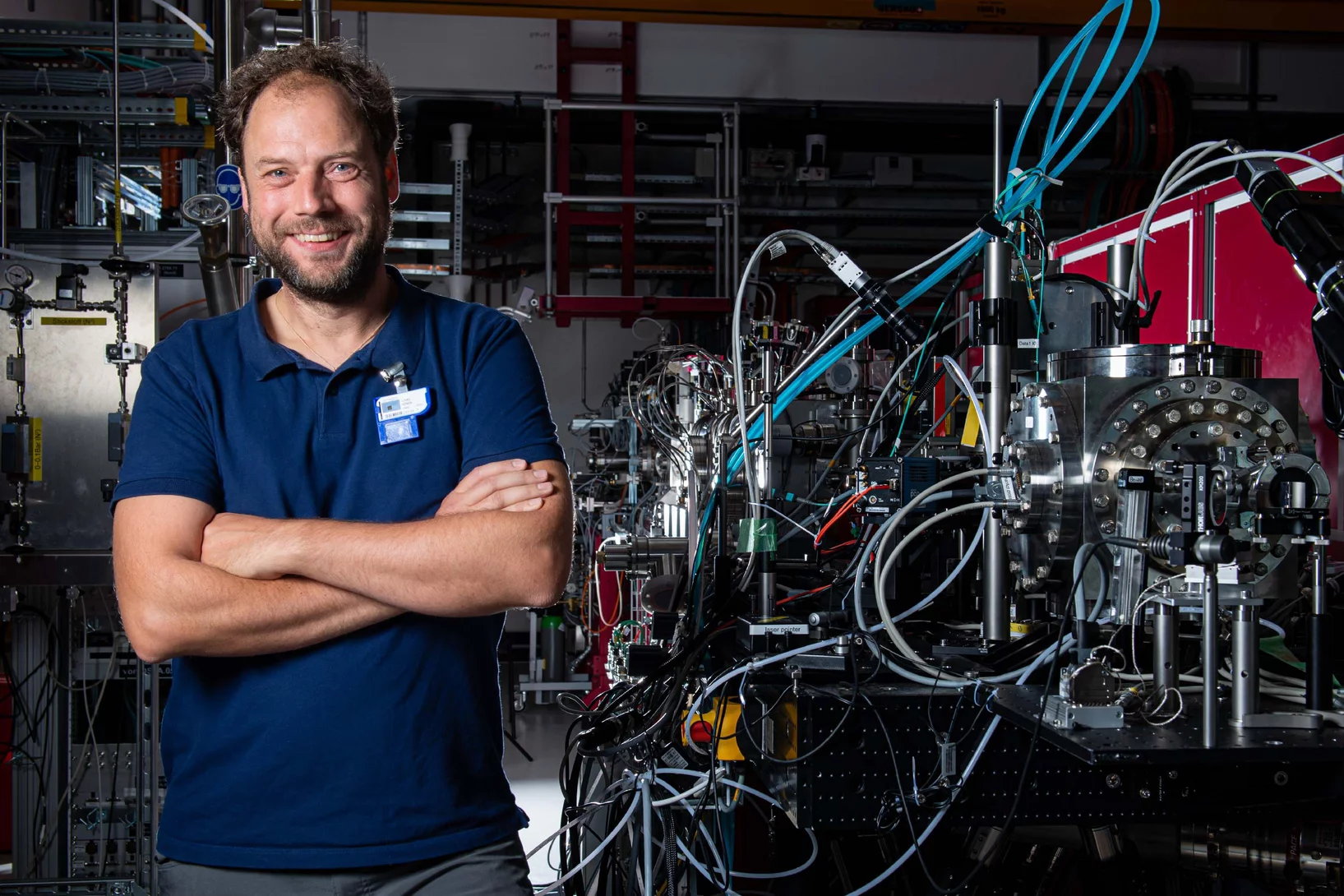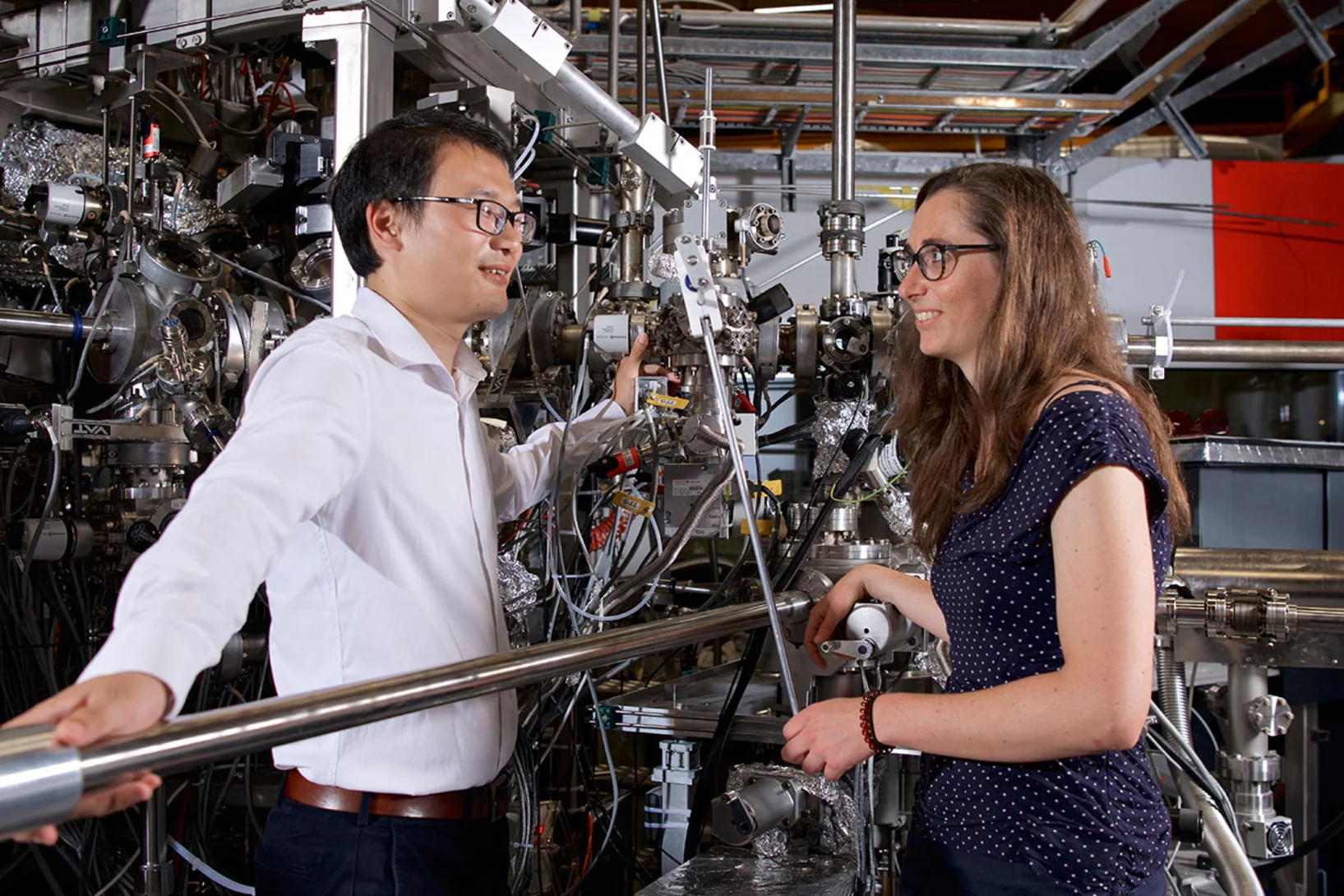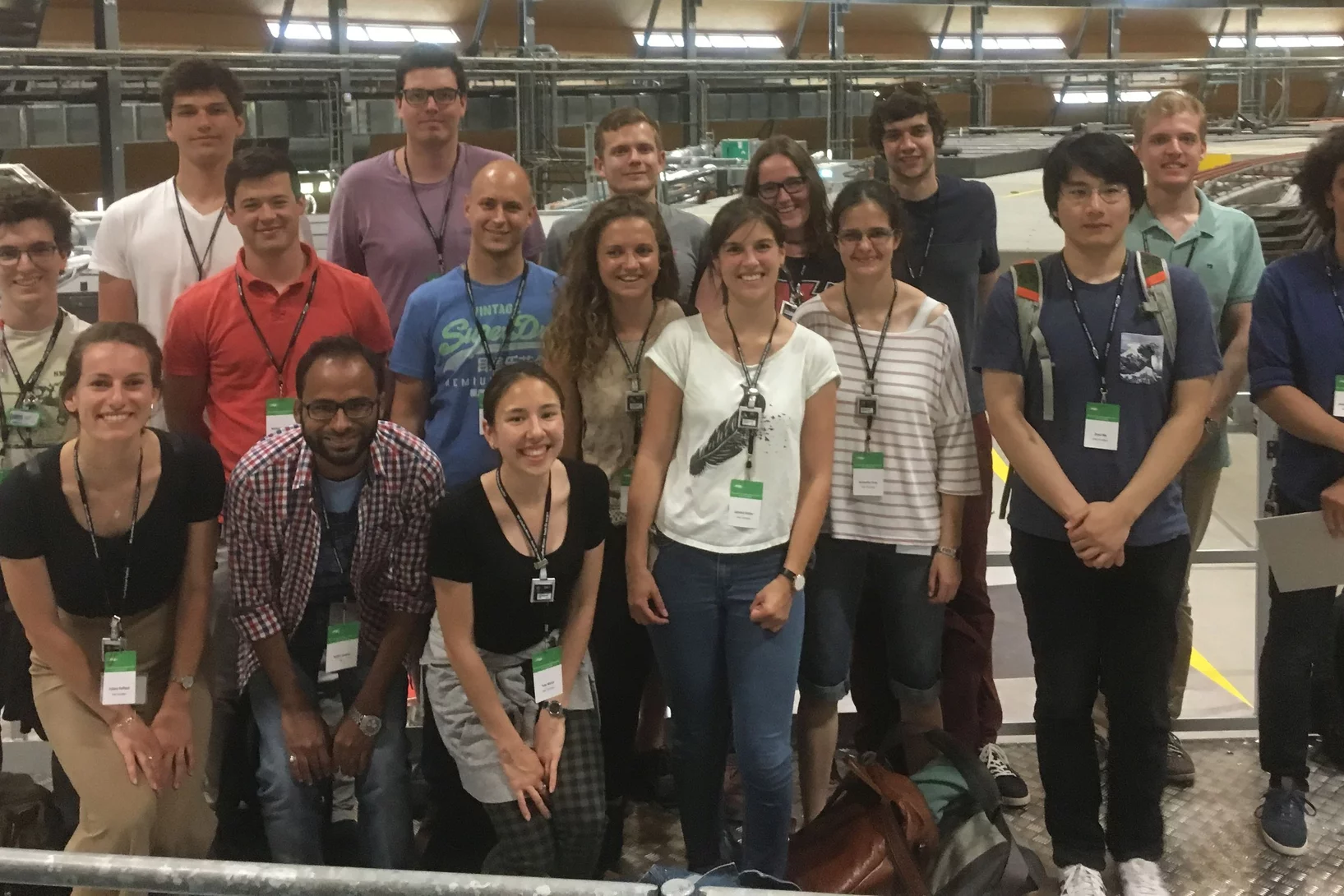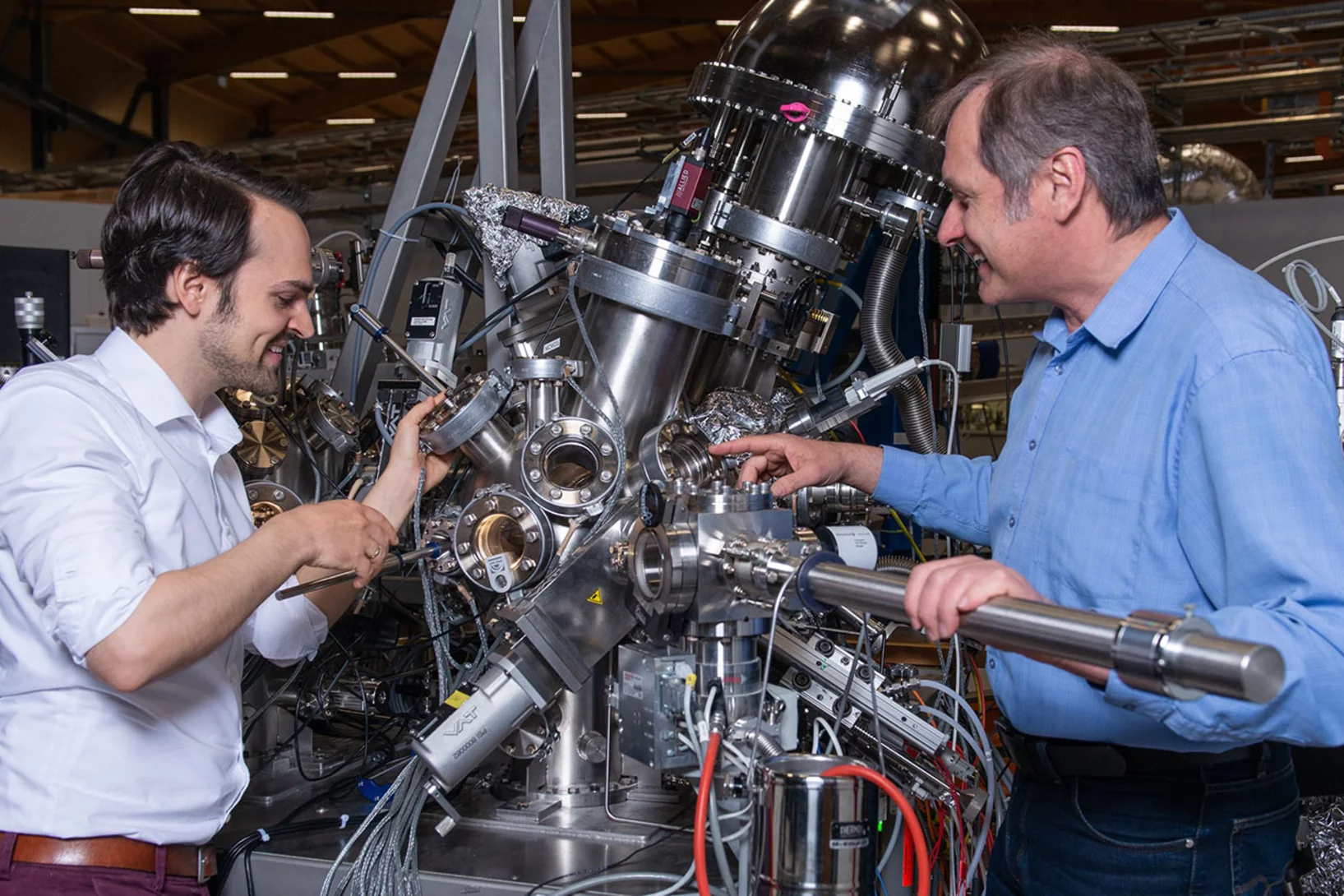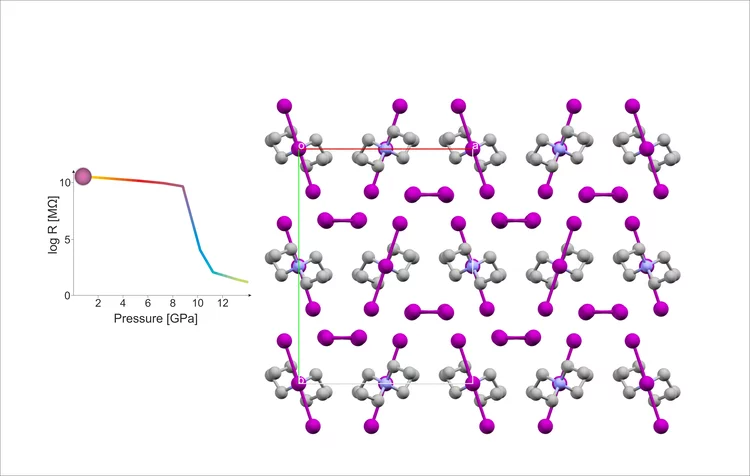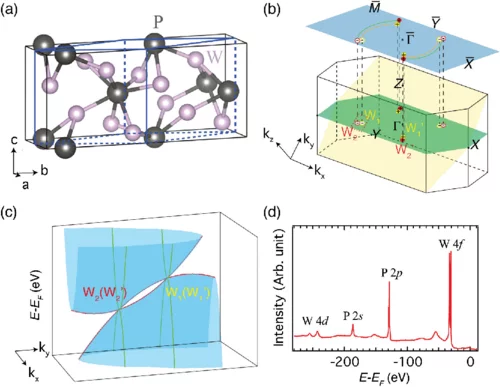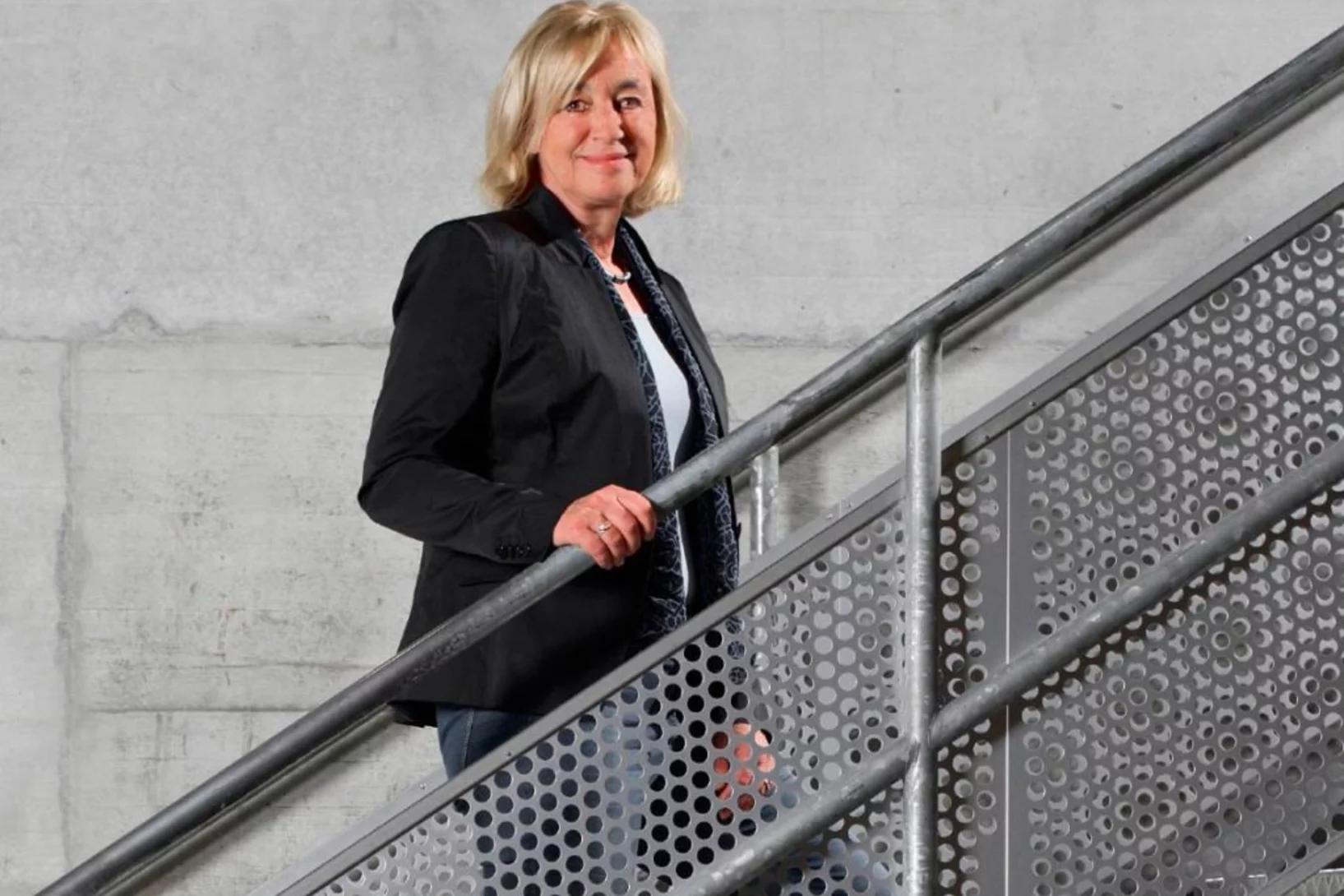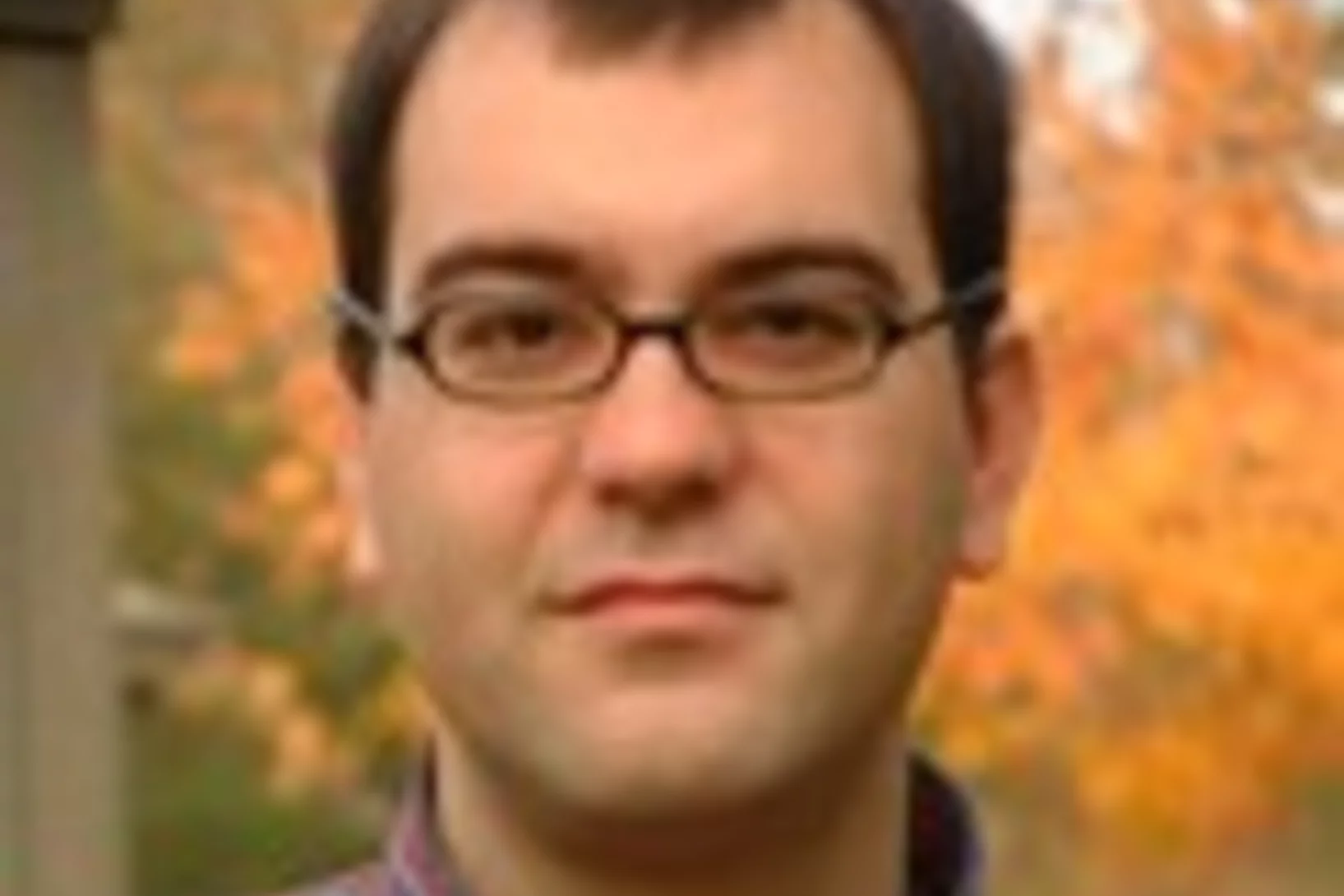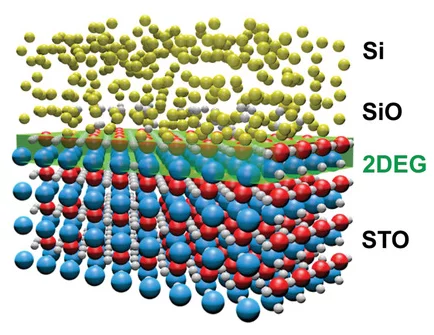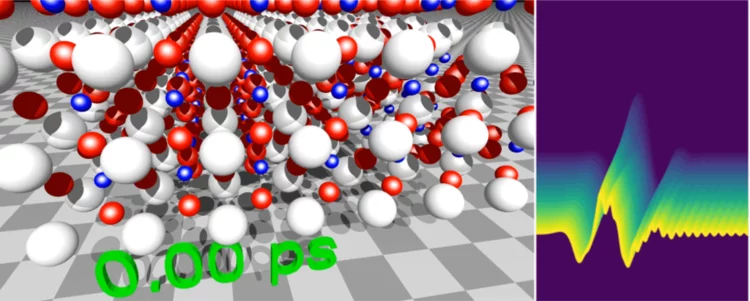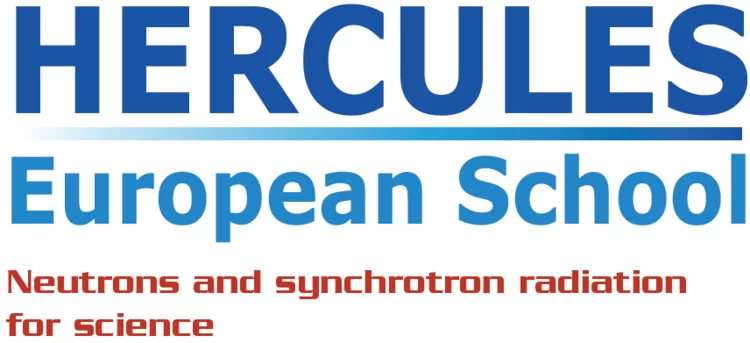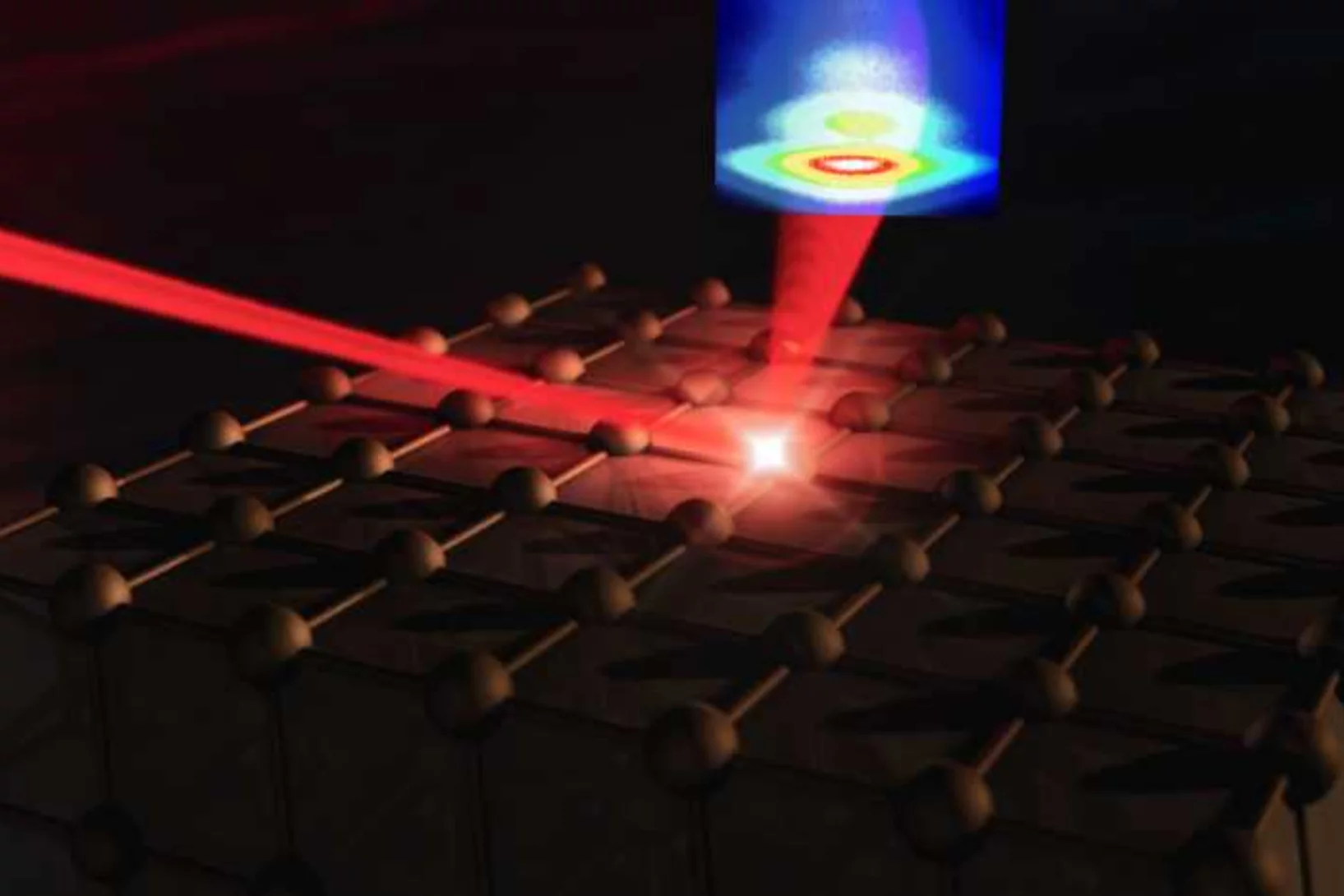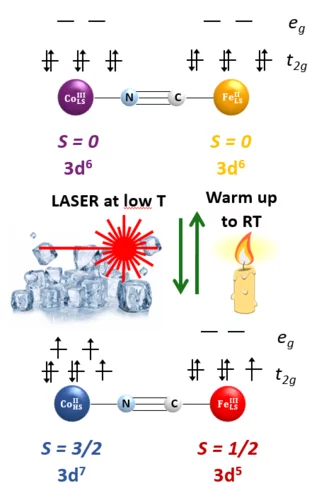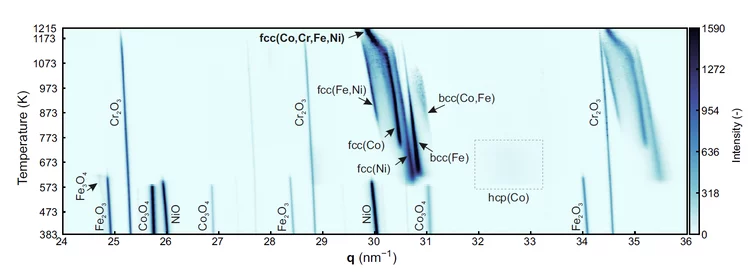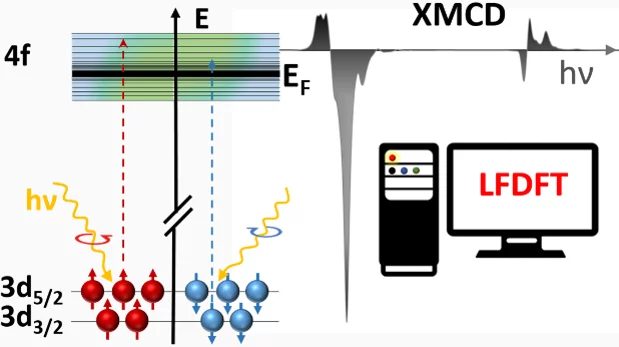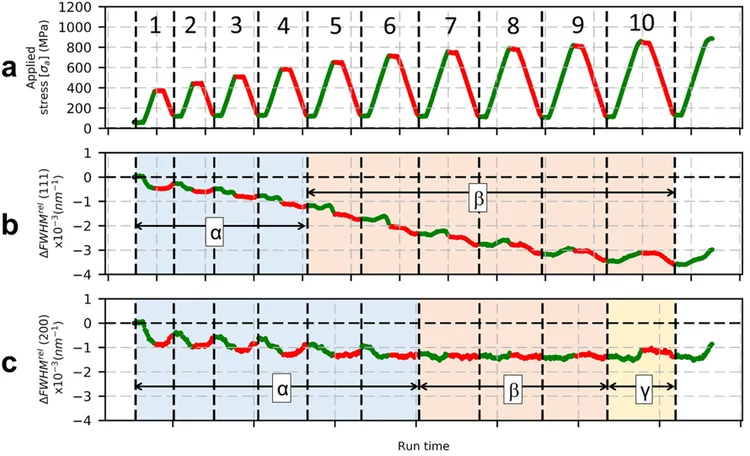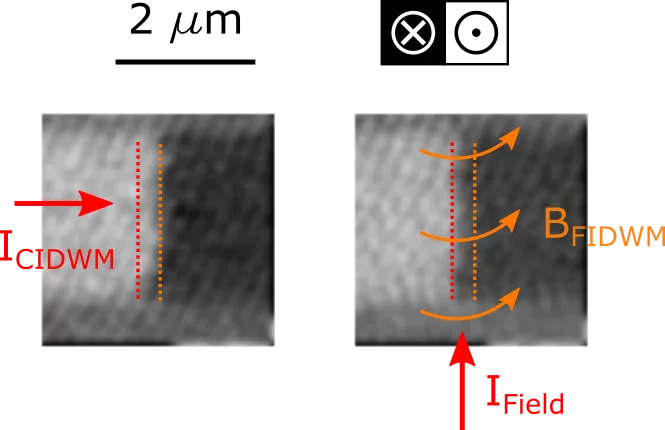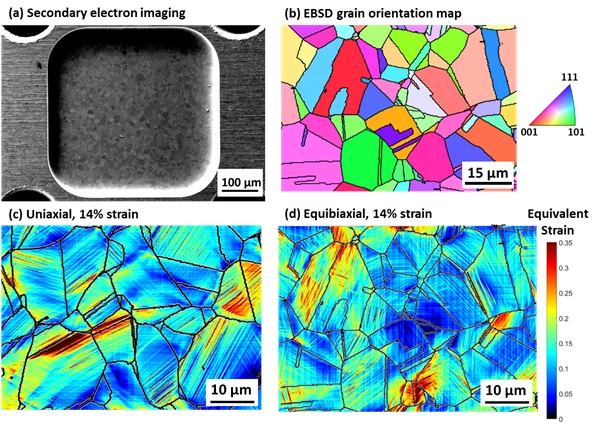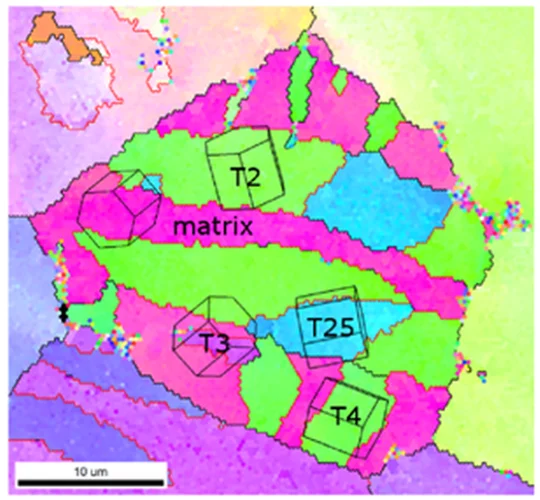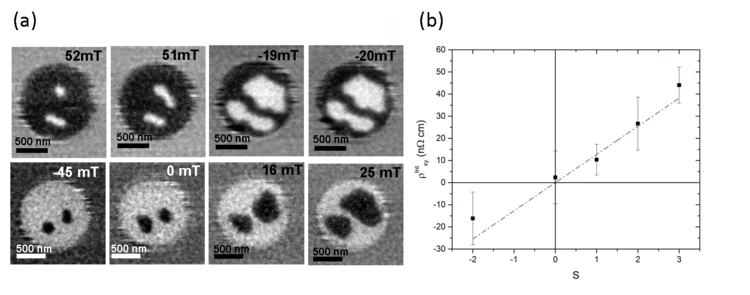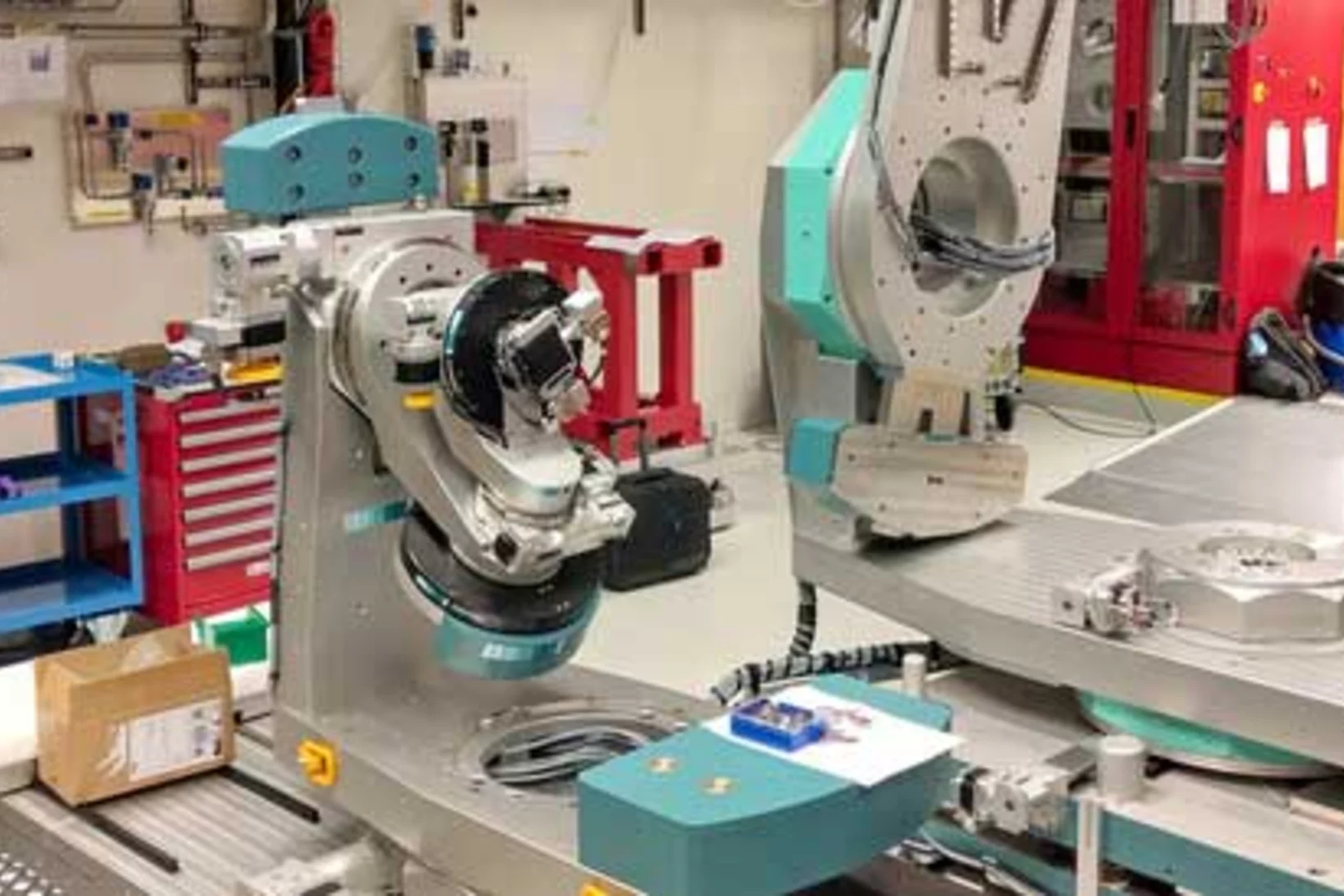Soft X-ray Laminography: 3D imaging with powerful contrast mechanisms
3D imaging using synchrotron radiation is a widely used tool that allows access to the inner structure of complex objects. An international and interdisciplinary consortium of scientists from the Swiss Light Source (PolLux and cSAXs), the Friedrich-Alexander-Universität Erlangen-Nürnberg, and the University of Cambridge developed the new 3D imaging technique of Soft X-ray Laminography (SoXL). SoXL allows for the investigation of thin and extended samples while taking advantage of the characteristic absorption contrast mechanisms in the soft X-ray range, providing 3D information with nm spatial resolution.
Wrinkles and wrinklons: magnetic films with tuneable topographies
Sebastian Gliga has been awarded an SNF Spark grant to investigate the possibility of combining magnetic thin films with graphene to create logical devices. As electronic components, such as those found in computer CPUs, are miniaturized, they generate waste heatand alternative schemes are being explored to create novel data processing architectures. This project, to be carried out in the Microspectroscopy group (PSD), aims to exploit the tunable topography of graphene to create magnetic systems, which allow simultaneously guiding spin waves and performing logical operations based on spin wave interference.
Ultrafast diffuse x-ray scattering of a hybrid perovskite crystal
Organic–inorganic ‘hybrid’ perovskites have recently gained attention as a low-cost alternative to silicon solar cells. However, many properties of these materials are still poorly understood. In particular, how imperfections in the crystals, which can be both static or dynamic, affect energy transport remains unclear.
Field-Induced Double Spin Spiral in a Frustrated Chiral Magnet
X-rays and neutrons has been used to investigate the correlation between structural and magnetic chirality in magnetic fields and its impact on the polarization in multiferroic langasites. A long wavelength modulation of the magnetic structure has been found, and it is shown that the chirality of the crystals structure connects to chirality of the magnetic structure that leads to an additional electric polarization in this field induced phase, which, depending on the christal chirality, can either increase the electric polarization or lead to a reversal of it for increasing magnetic fields. The theoretical description based on allowed Lifshitz invariants intriguingly contain all the essential ingredients for the realization of topologically stable antiferromagnetic skyrmions.
Characterisation of work hardening and springback in Ti
Interrupted standard tensile tests with in situ x-ray diffraction and quasi-in situ electron backscatter diffraction reveal the origin behind the work hardening plateau and springback.
Ultrafast Transient Increase of Oxygen Octahedral Rotations in a Perovskite
Via femtosecond x-ray diffraction, we observe an ultrafast increase of the octahedral rotation angle in the perovskite EuTiO3 after ultrafast laser excitation. This is opposite to what is expected from an increase in temperature. We ascribe this increase to an effective change of ionic sizes that transforms directly into a change of the Goldschmidt tolerance factor. Rotating oxygen octahedra at will opens up the possibility to control electronic and magnetic properties of perovskites on ultrafast timescales.
Forschen und Tüfteln – Der SwissFEL im Jahr 2019
Die neueste Grossforschungsanlage am PSI, der SwissFEL, ist fertiggestellt. Im Januar 2019 begann der Regelbetrieb. Henrik Lemke, Leiter der Gruppe SwissFEL Bernina, zieht eine erste Zwischenbilanz.
Weyl-Fermionen in einer weiteren Materialklasse entdeckt
Eine besondere Art von Teilchen, sogenannte Weyl-Fermionen, waren bislang nur in bestimmten nicht-magnetischen Materialien gefunden worden. Jetzt aber haben PSI-Forschende sie erstmals auch in einem besonderen paramagnetischen Material experimentell nachgewiesen.
PSI School for Master Degree Students - Introducing Photons, Neutrons and Muons for Condensed Matter Physics and Materials Science
From 17 – 21 June 2019 the Neutron and Muon Division (NUM) and the Photon Science Division (PSD) of PSI hosted 18 Master Degree students of physics, chemistry, materials and interdisciplinary science, as well as nuclear engineering to provide an introduction to the characterization of materials with large scale facilities like SINQ, SμS, SLS and SwissFEL. The course taught a basic understanding of how photons, neutrons and muons interact with matter, and how this knowledge can be used to solve specific problems in materials research.
Details of the program can be found at http://indico.psi.ch/event/PSImasterschool
Neuartiges Material zeigt auch neue Quasiteilchen
Forschende des PSI haben an der Synchrotron Lichtquelle Schweiz SLS ein neuartiges kristallines Material untersucht, das bislang nie gesehene elektronische Eigenschaften zeigt. Unter anderem konnten sie eine neue Sorte Quasiteilchen nachweisen: sogenannte Rarita-Schwinger-Fermionen.
An iodine polymeric chain with tunable conductivity
The progressive hydrostatic compression of I2 and I3- units in an organic salt lead to a homoatomic polymeric chain. As the I---I distance collapses the covalent character of the interaction becomes more relevant, leading to a pressure-tunable increased conductivity.
New study gives compelling evidence that tungsten diphosphide is a type-II Weyl semimetal
Researchers at NCCR MARVEL have combined first principles calculations with soft X-ray angle-resolved photoemission spectroscopy to examine tungsten diphosphide’s electronic structure, characterizing its Weyl nodes for the very first time. In agreement with density functional theory calculations, the results revealed two pairs of Weyl nodes lying at different binding energies. The observation of the Weyl nodes, as well as the tilted cone-like dispersions in the vicinity of the nodal points, provides compelling evidence that the material is a robust type-II Weyl semimetal with broken Lorentz invariance. This is as MARVEL researchers predicted two years ago. The research has been published in Physical Review Letters as an Editor's Suggestion.
Prof. Helena Van Swygenhoven presented the plenary Kavli lecture at the MRS spring meeting 2019
Plenary Session Featuring The Fred Kavli Distinguished Lectureship in Materials Science:
Tuesday, April 23
8:15 am – 9:30 am
PCC North, 100 Level, Ballroom 120 D
Carlos Vaz Selected by the Journal of Materials Chemistry C as Outstanding Reviewer in 2018
SIM beamline scientist Carlos Vaz was recognized as outstanding referee for providing high quality peer review for the Journal of Materials Chemistry C (Royal Society of Chemistry).
X‐Ray Writing of Metallic Conductivity and Oxygen Vacancies at Silicon/SrTiO3 Interfaces
Lithography‐like writing of conducting regions at the interface between SrTiO3 and amorphous Si using X‐ray irradiation opens ways for spatially controlled functionalities in oxide heterostructures.
Terahertz-driven phonon upconversion in SrTiO3
Direct manipulation of the atomic lattice using intense long-wavelength laser pulses has become a viable approach to create new states of matter in complex materials. Conventionally, a high-frequency vibrational mode is driven resonantly by a mid-infrared laser pulse and the lattice structure is modified through indirect coupling of this infrared-active phonon to other, lower-frequency lattice modulations.
HERCULES school 2019 at SLS
In the week of April 1-5 PSI welcomes 20 PhD students and postdocs taking part in the European HERCULES 2019 school on Neutron and Synchrotron Radiation. They will attend lectures and perform two days of practical courses at several beam lines of the Swiss Light Source.
A new twist on a mesmerising story
The Einstein–de Haas effect, first demonstrated more than a century ago, provides an intriguing link between magnetism and rotation in ferromagnetic materials. An international team led by ETH physicist Steven Johnson now established that the effect has also a central role in ultrafast processes that happen at the sub-picosecond timescale — and thus deliver fresh insight into materials that might form the basis for novel devices.
Photoswitching in a Molecular Cube
Niéli’s paper is accepted in the Journal of Physical Chemistry Letters! We use X-ray absorption spectroscopy and X-ray magnetic circular dichroism to watch directly how the Co and Fe ions in a molecular cube change their oxidation states and turn from diamagnetic into paramagnetic units upon light irradiation.
A new spin in nano-electronics
In recent years, electronic data processing has been evolving in one direction only: The industry has downsized its components to the nanometer range. But this process is now reaching its physical limits. Researchers at the Helmholtz-Zentrum Dresden-Rossendorf (HZDR) and the Paul Scherrer Institut (PSI) are therefore exploring spin waves or so-called magnons – a promising alternative for transporting information in more compact microchips. Cooperating with international partners, they have successfully generated and controlled extremely short-wavelength spin waves. The physicists achieved this feat by harnessing a natural magnetic phenomenon, as they explain in the journal Nature Nanotechnology.
Additive Manufacturing of High Entropy Alloys
Additive manufacturing of high-entropy alloys combines the mechanical properties of this novel family of alloys with the geometrical freedom and complexity required by modern designs. An approach to additive manufacturing of high-entropy alloys has been developed based on 3D extrusion of inks containing a blend of oxide nanopowders (Co3O4 + Cr2O3 + Fe2O3 + NiO), followed by co-reduction to metals, inter-diffusion and sintering to near-full density CoCrFeNi in H2. A complex phase evolution path is observed by in-situ X-ray diffraction in extruded filaments: the oxide phases undergo reduction and the resulting metals inter-diffuse, ultimately forming the desired fcc-CoCrFeNi alloy (see figure). Linked to this phase evolution is a complex micro-structural one, from loosely packed oxide particles to fully-annealed, metallic CoCrFeNi with 99.6 ± 0.1% relative density. CoCrFeNi micro-lattices are created with strut diameters as low as 100 μm and excellent mechanical properties at ambient and cryogenic temperatures.
New Method for Calculating Soft X-ray Magnetic Circular Dichroism Spectra
Scientists have demonstrated in a combined theoretical and experimental effort that the new ligand-field density functional theory method (LF-DFT) can be used to calculate the X-ray absorption spectra (XAS) and X-ray magnetic circular dichroism (XMCD) of lanthanide compounds from purely structural input.
Elektronen zuschauen und Bits anknipsen
Kleiner, schneller und vor allem energieeffizienter soll die Elektronik werden. Auch in mehreren Forschungsgruppen am PSI sind diese Themen präsent. Von schrittweisen Verbesserungen bis zum kompletten Umdenken – wer tüftelt derzeit woran?
Revealing the role of microstructure architecture on strength and ductility of Ni microwires by in-situ synchrotron X-ray diffraction
The effect of diameter reduction on the mechanical properties of cold-drawn nickel microwires has been analyzed by a combination of in situ X-ray diffraction and electron backscatter diffraction observations.
Sub-ns magnetic domain wall motion dynamics
Magnetic domain walls can be reliably displaced by electrical currents, allowing for the fabrication of retentive magnetic memory elements without mechanically moving parts, such as e.g. the magnetic racetrack memory. Researchers in a joint collaboration between the PolLux endstation of the Swiss Light Source and the University of Leeds were able to investigate the dynamics of magnetic domain wall motion with a sub-ns time step, providing a substantial step forward towards the unraveling of the physical processes behind the current- and magnetic field-induced motion of magnetic domains.
A High Resolution Digital Image Correlation Study under Multiaxial Loading
We have developed a new cruciform geometry with reduced thickness at the center, which allows reaching high plastic strain under equibiaxial loading. The novel thinning method results in excellent surface quality, suitable for electron backscatter diffraction (EBSD) and high-resolution digital image correlation (HRDIC) investigations. We performed an in-situ HRDIC study on a 304 austenitic stainless steel using the new cruciform geometry to follow the slip activity under uniaxial and equibiaxial loadings.
In situ tension-tension strain path changes of cold-rolled Mg AZ31B
The mechanical behavior of cold-rolled Mg AZ31B is studied during in-plane multiaxial loading and tension-tension strain path changes using in situ neutron diffraction and electron backscatter diffracion.
Lorem ipsum dolor sit amet, consetetur sadipscing elitr
Lorem ipsum dolor sit amet, consetetur sadipscing elitr, sed diam nonumy eirmod tempor invidunt ut labore et dolore magna aliquyam erat, sed diam voluptua.
Discrete Hall contribution of magnetic skyrmions
The reliable electrical detection of magnetic skyrmions is of fundamental importance for the application of such topological magnetic quasi-particles for data storage devices. Researchers in a joint collaboration between the University of Leeds and the PolLux endstation have investigated the electrical detection of isolated magnetic skyrmions in applications-relevant nanostructured devices, observing the presence of a strong skyrmion-dependent contribution to the Hall resistivity.
Bernina status first summer shutdown
The summer shutdown was used to install more missing hardware. With the new components the Bernina instrument will be already very close to the full design capabilities when the exciting time of user experiments will begin in 2019.
